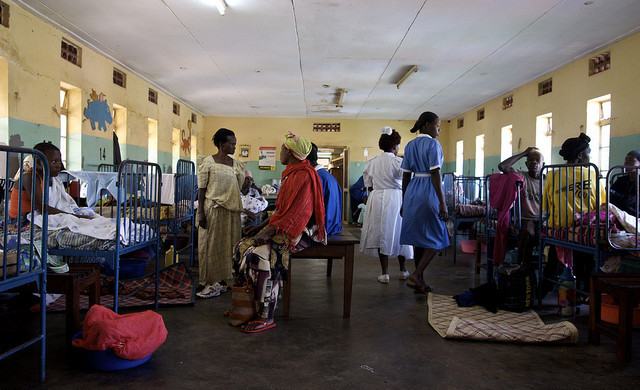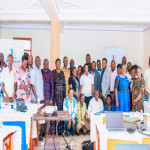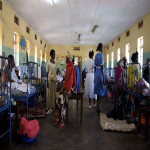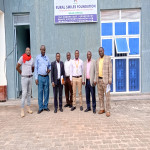In Uganda’s rural communities, healthcare is not just a service—it’s a lifeline that remains out of reach for far too many. Despite healthcare being a fundamental right, millions living in underserved regions face daily struggles to access even basic medical attention. Poor infrastructure, long distances to health centers, and a critical shortage of healthcare professionals have created a widening gap that continues to impact vulnerable populations. Through sustained innovation and collective action, the vision of equitable healthcare for all in Uganda is steadily becoming a reality.
The Struggles of Rural Healthcare in Uganda
Imagine walking 15 kilometers just to see a nurse. For many rural Ugandans, this is not a hypothetical scenario but a harsh reality. Over 60% of rural residents face significant barriers to accessing healthcare due to poor infrastructure, inadequate transportation, and a limited number of health centers (Dowhaniuk N. 2021). Even when they arrive at a facility, they may encounter shortages of essential medicines, a lack of trained medical personnel, and overcrowded clinics.
The doctor-to-patient ratio in rural Uganda is a staggering 1:25,000—far below the World Health Organization’s recommendation of 1:1,000 (Ajari, E. E., & Ojilong, D. 2020). This shortage means that treatable conditions such as malaria, diarrhea, and respiratory infections often lead to preventable deaths. Maternal and infant mortality rates are equally alarming, with limited access to skilled birth attendants and antenatal care services leaving expectant mothers at high risk.
Health Education: A Path to Empowerment
In tackling these challenges, one of the most effective tools is knowledge. Empowering communities with health education can significantly improve outcomes. Awareness campaigns focusing on hygiene, nutrition, and maternal health have already demonstrated success in reducing the incidence of preventable diseases.
Community health workers play a pivotal role in these efforts. Equipped with training, they become trusted figures within their communities, providing life-saving services such as vaccinations, nutritional advice, and early disease detection. By building capacity within rural areas, these health workers ensure consistent and localized care for families who would otherwise go without.
Innovation: A Catalyst for Change
Innovation is reshaping the way healthcare reaches rural Uganda. Mobile clinics, for instance, have revolutionized access to medical care. By traveling to remote areas, these clinics provide vaccinations, antenatal care, and treatments for chronic illnesses directly to communities in need.
Telemedicine is another breakthrough, allowing patients to consult with medical specialists via digital platforms. For individuals in remote regions, this means timely diagnoses and referrals without the need for costly and exhausting travel. Partnerships with local organizations are also addressing infrastructure challenges, from building maternal health centers to installing clean water systems, which are crucial for overall health.
Fostering Sustainable Partnerships for a Hopeful Future
Addressing Uganda’s rural healthcare challenges requires the collective effort of governments, non-profits, and local communities. No single entity can meet the scale of these needs alone. Effective progress depends on the strategic collaboration between stakeholders, coupled with increased investments in infrastructure and policy reforms tailored to underserved populations. Grassroots initiatives that center the voices of local communities and provide customized solutions are crucial for creating lasting change.
Despite the challenges, hope remains. The resilience of rural communities, paired with innovative healthcare solutions such as mobile clinics and community health workers, is laying the foundation for a more equitable healthcare system. By breaking down systemic barriers and empowering individuals with essential knowledge, Uganda is steadily advancing toward a future where quality healthcare is accessible to all, regardless of location.
References
Image Source: Parliament Watch (n.d.). Health sector: We are still not using the little resources allocated properly. Available at: https://parliamentwatch.ug/blogs/health-sector-we-are-still-not-using-the-little-resources-allocated-properly/ (Accessed: 21 January 2025).
Dowhaniuk N. (2021). Exploring country-wide equitable government health care facility access in Uganda. International journal for equity in health, 20(1), 38. Available at: https://doi.org/10.1186/s12939-020-01371-5 (Accessed: 20 Jan 2025).
Ajari, E. E., & Ojilong, D. (2020). Assessment of the preparedness of the Ugandan health care system to tackle more COVID-19 cases. Journal of global health, 10(2), 020305. Available at: https://doi.org/10.7189/jogh.10.020305 (Accessed: 20 Jan 2025).
World Health Organization. (n.d.). Medical doctors (per 10,000 population). World Health Organization. Available at: https://www.who.int/data/gho/data/indicators/indicator-details/GHO/medical-doctors-(per-10-000-population) (Accessed: 19 Jan 2025).




